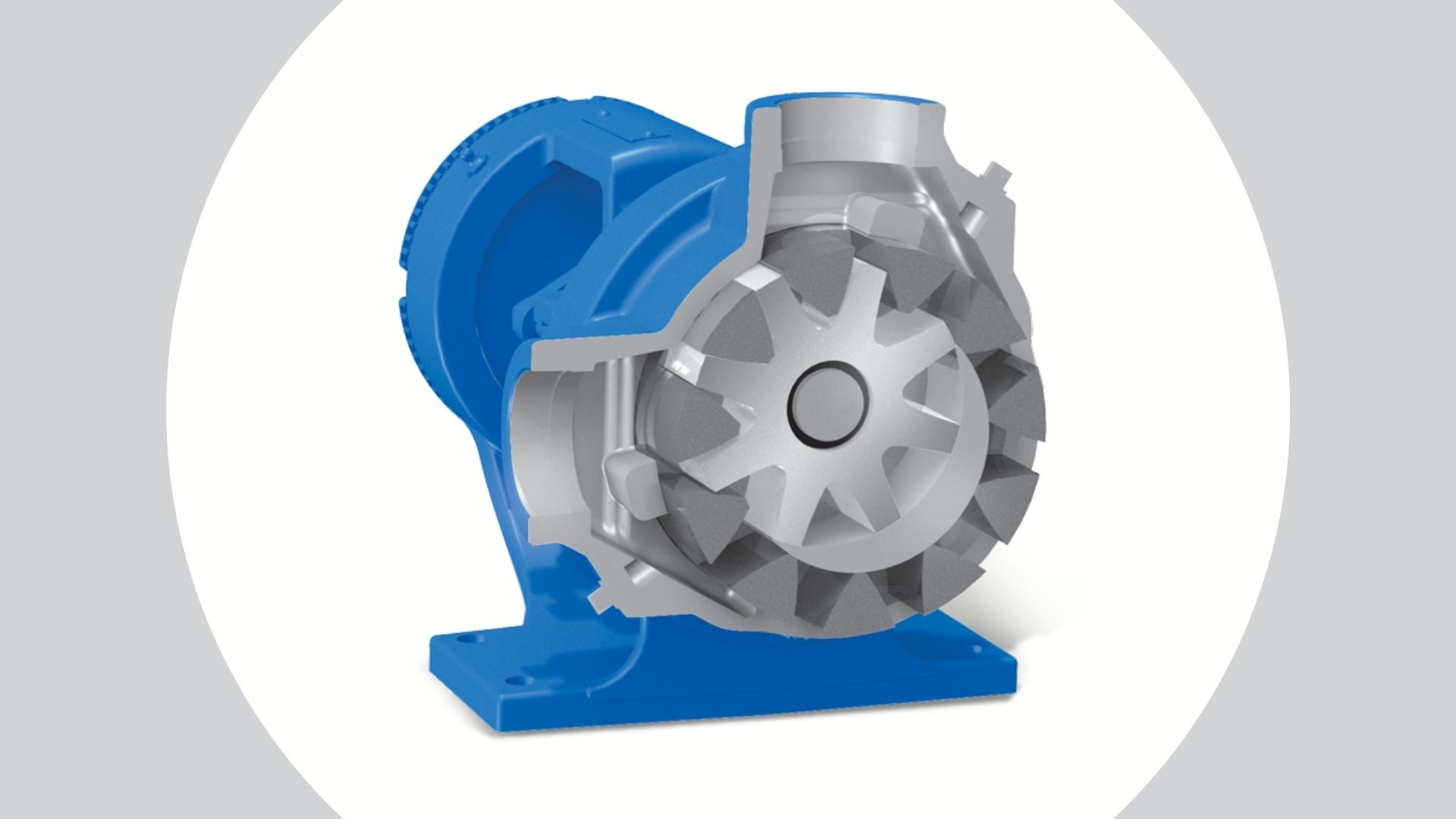A gentleman once contacted me to let me know that he’d cracked a head, an impressive, but not entirely unheard-of feat. When I asked how this had happened he admitted “well, I was wailing on it pretty hard”; I appreciated his honesty. What followed was a 30-minute conversation full of mis-assumptions and confusion. At the conclusion I discovered that he was not talking about a head (as in the end plate of a gear pump) but rather a head (as in the top of a snare drum). An internet search for “head” had landed him on our site by mistake.
The problem lies in a variety of terms, some industry standard and some slang to describe the same thing. In truth, while Viking Pump calls this part the head, others call it the end plate, cap, front cover, etc. The following is a list of these terms and the Viking translation from the manufacturer’s perspective.
TERMS: Viking pump, Banana pump, Crescent pump, Star pump, Star gear pump
TRANSLATION: Internal Gear Pump
Viking Pump invented this pump principle so it’s understandable that over the past century the company name has become synonymous with the internal gear pump principle itself. Some of these other terms are a little more confusing. The “banana pump” is an uncommon term and seems to be reserved for small internal gear pumps commonly used for applying asphalt emulsions. I assume the genesis for this term is the shape of the crescent on the head of the pump which can resemble a banana, like the “crescent pump” misnomer. Terms like “star pump” and “star gear pump” are likely describing the shape of the idler gear in the pump which can resemble a star.

TERMS: Impeller, Drive Gear
TRANSLATION: Rotor Gear (or just Rotor for short)
Centrifugal pumps have impellers, rotary pumps have rotors. For internal gear pumps the rotor is the drive gear and is mounted on the end of a shaft, giving it a similar appearance to the impeller on the end of a centrifugal pump shaft. For customers with more experience with centrifugal pumps than rotary pumps it’s understandable why they default to this term.
TERMS: Driven Gear, Lay Gear, Star Gear, Sun Gear
TRANSLATION: Idler Gear (or just Idler for short)
The idler gear in an internal gear pump is the driven gear, rotated by the rotor which is the driver gear. Names like “driven gear” or “lay gear” are more common for external gear pumps or power transmission gears, but it’s understandable why these terms persist. “Star gear” and “sun gear” refer to the shape and appearance of the idler gear and likely just help users distinguish it from the rotor.

TERMS: Moon, Smile, Banana
TRANSLATION: Crescent
The crescent is the part of the head which creates the separation and seal between the rotor and idler gears of an internal gear pump. The name, crescent is a description of its appearance so it’s understandable that users have developed similar terms to describe this part of the head. It’s common to hear the terms “sun gear” and “moon” used together…very Zen.
TERMS: Pump Housing, Pump Body
TRANSLATION: Casing
For internal gear pumps, the term casing refers to the part of the pump which houses the gears and is the part with the ports for connecting the pump to the piping. “Housing” and “body” are similar terms that have crept into the vernacular.
TERMS: Pressure Regulator, Safety Valve, PSV
TRANSLATION: Relief Valve (or PRV)
This one is a little more important than some of the others because it speaks to how the valve operates and what its role is. Internal gear pumps like all types of rotary pumps require overpressure protection. A common form this takes is the relief valve mounted on the head (or casing depending on model and design) of the pump. Inline pressure regulators or safety valves can be used in conjunction with the pump-mounted relief valve, but it’s important not to mislead the purpose of the valve by using an incorrect term.